When spring arrives, nature unveils its palette of vibrant colors, and among the most captivating sights is the ethereal bloom of Jacaranda flowers. These delicate blossoms, with their enchanting lavender hue, transform landscapes into dreamlike realms. Native to South America but celebrated worldwide, Jacaranda flowers have captivated the hearts and imaginations of people across cultures and continents.
Jacaranda tree images
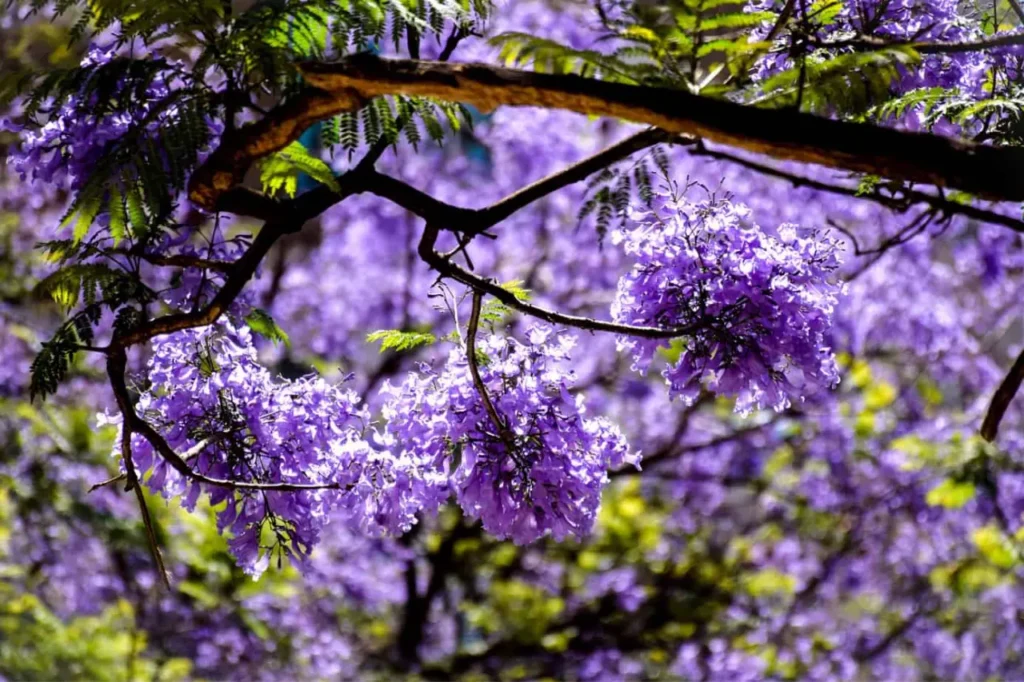
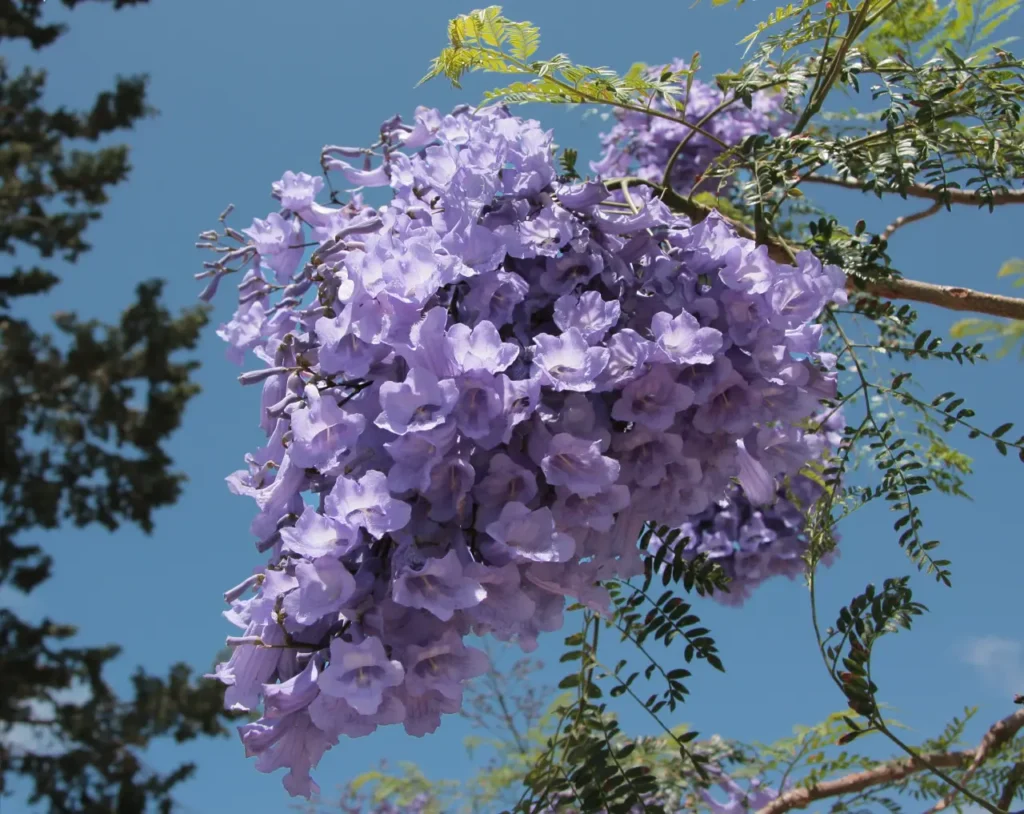
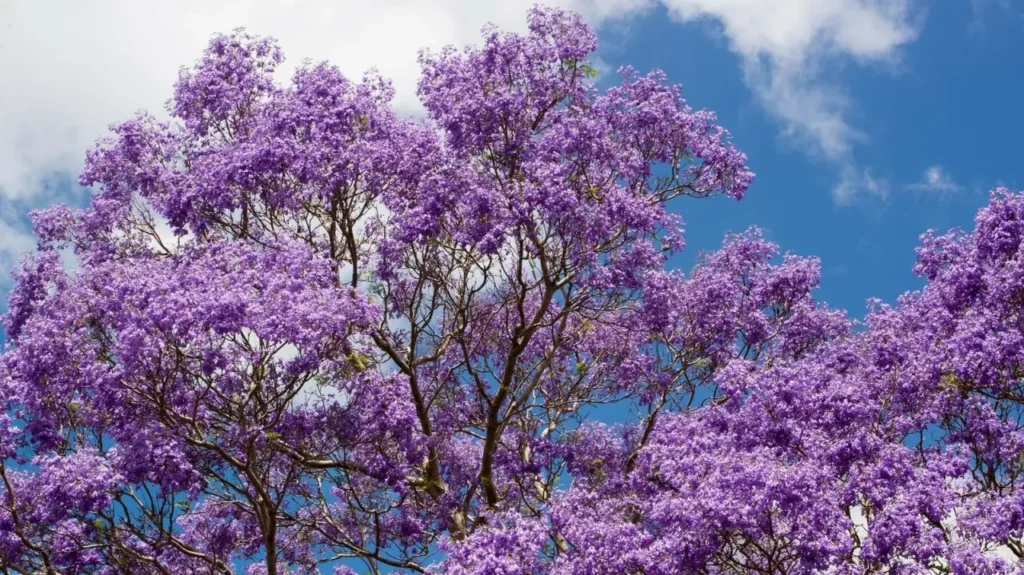
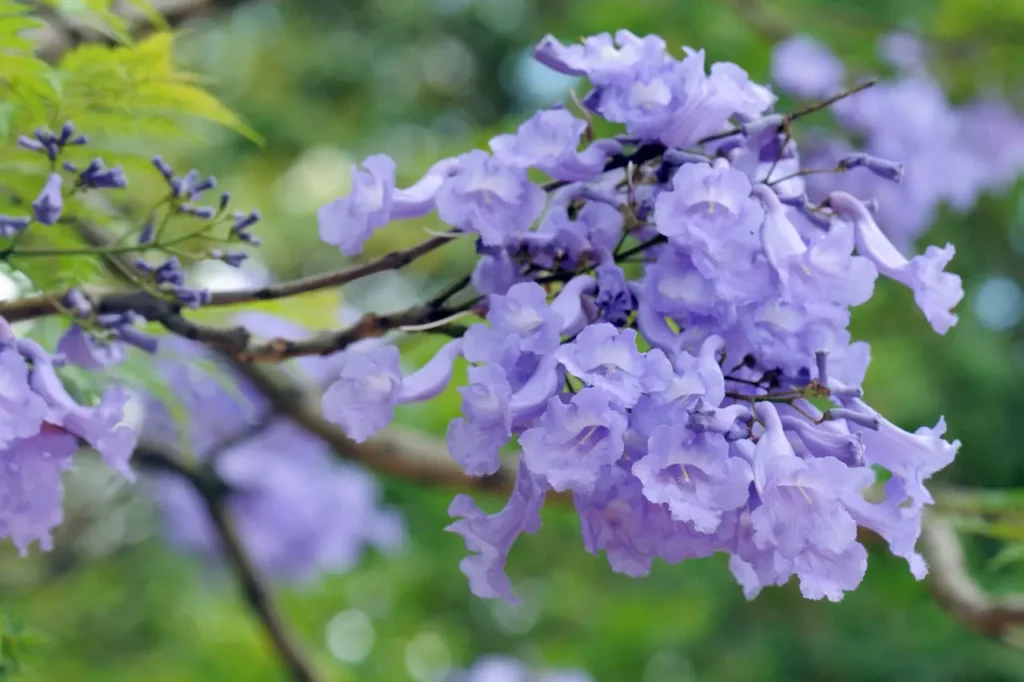

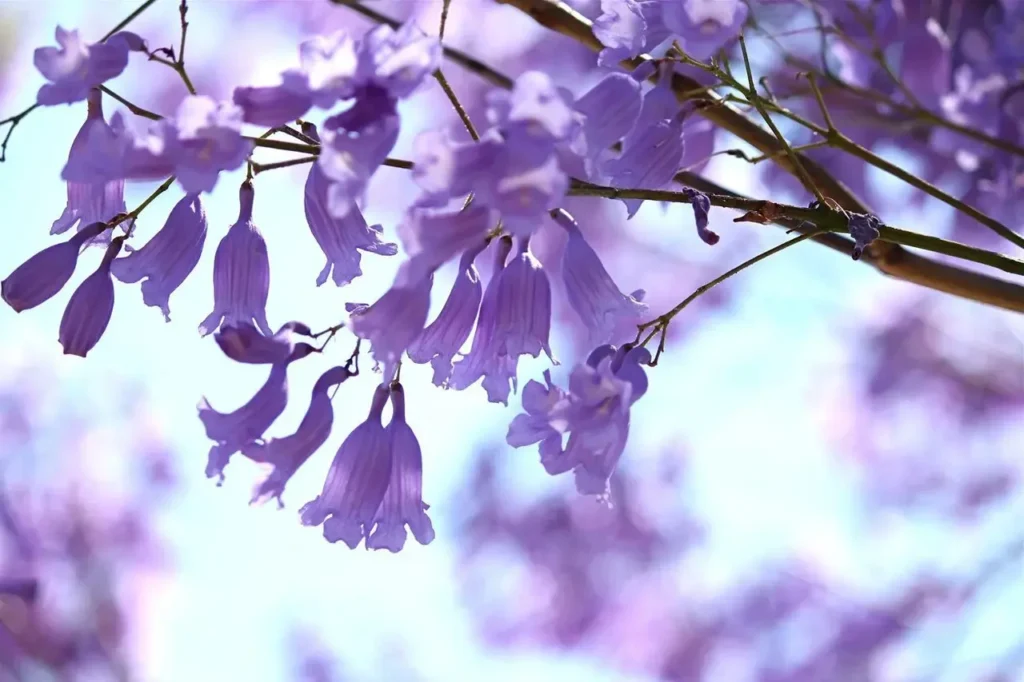

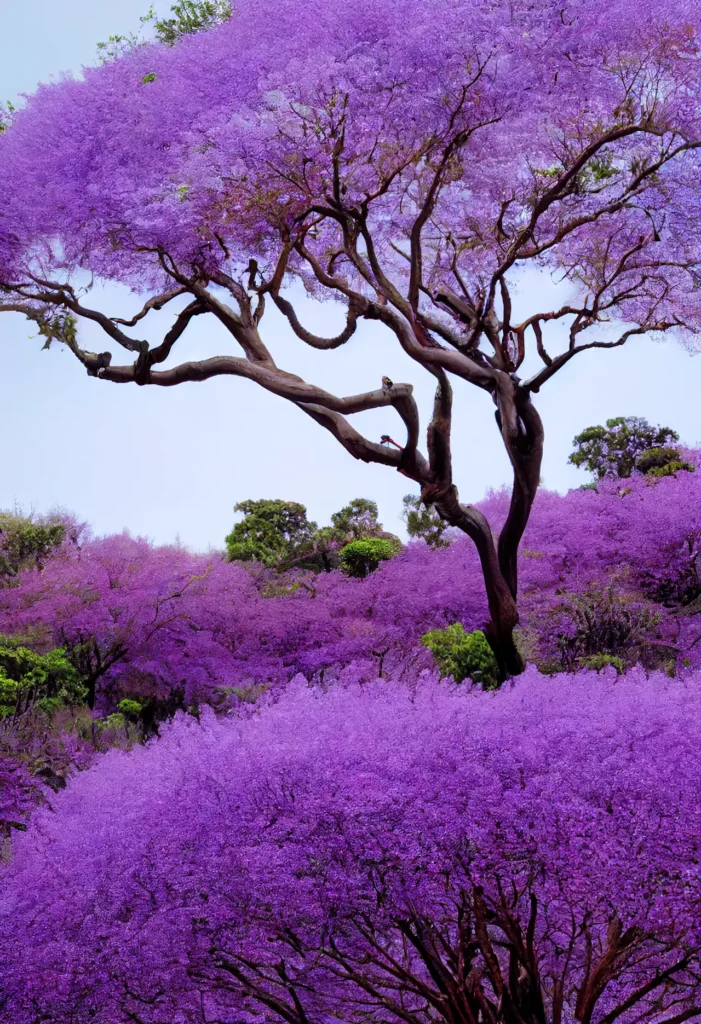
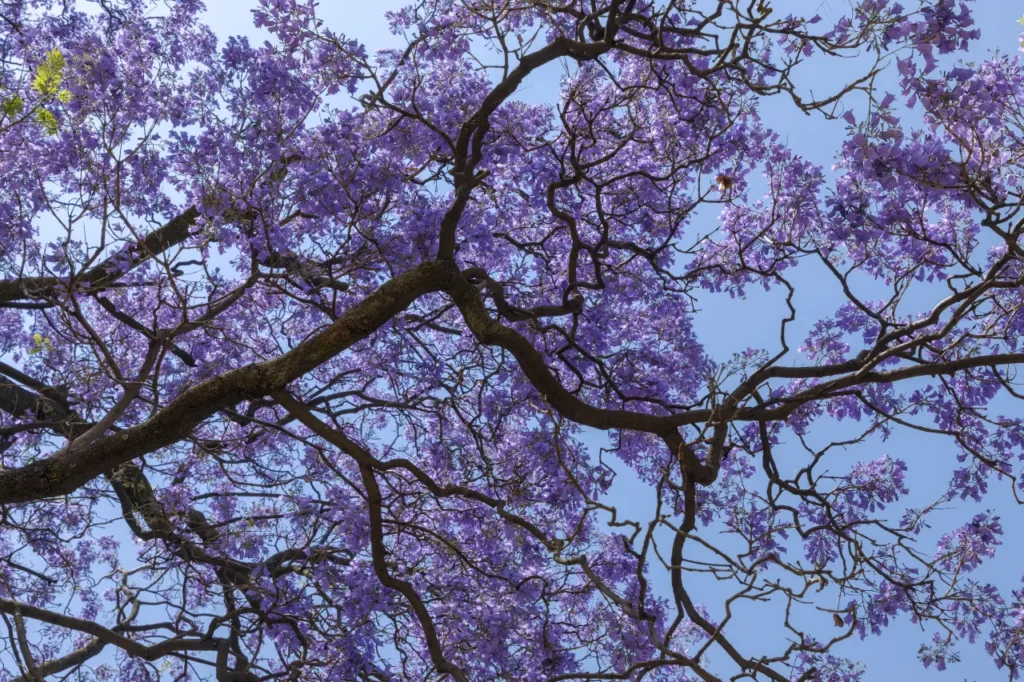
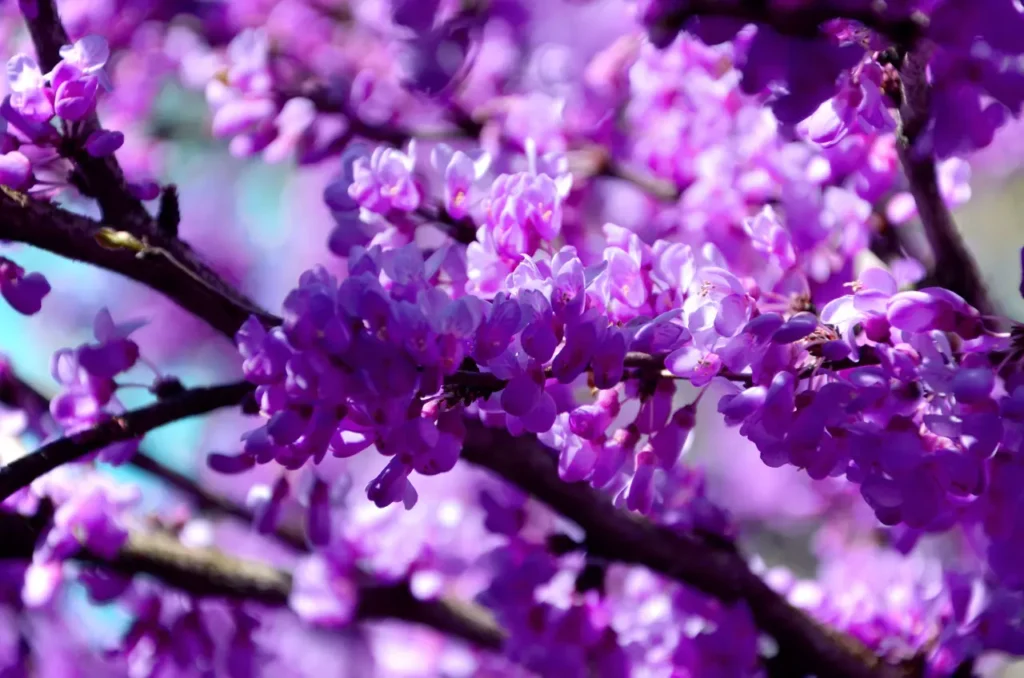
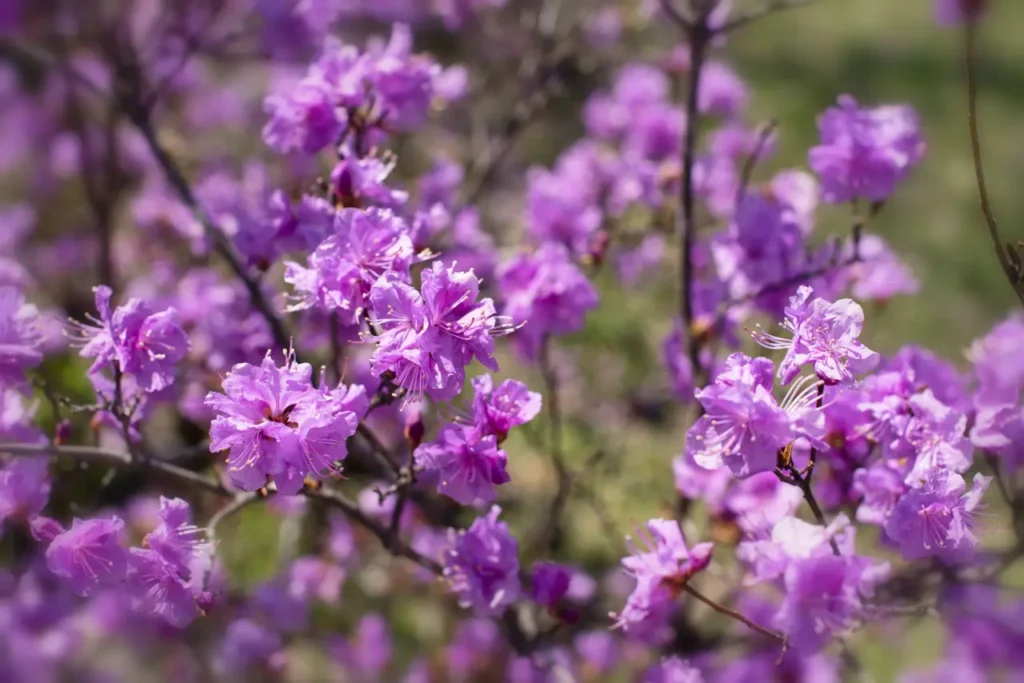
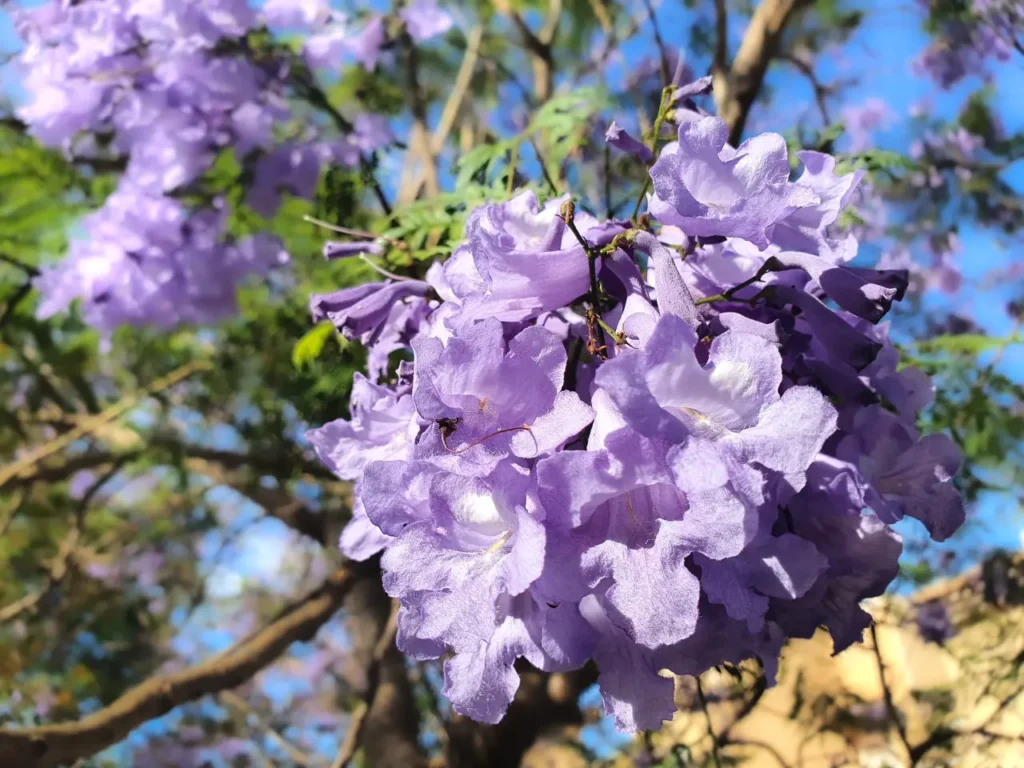
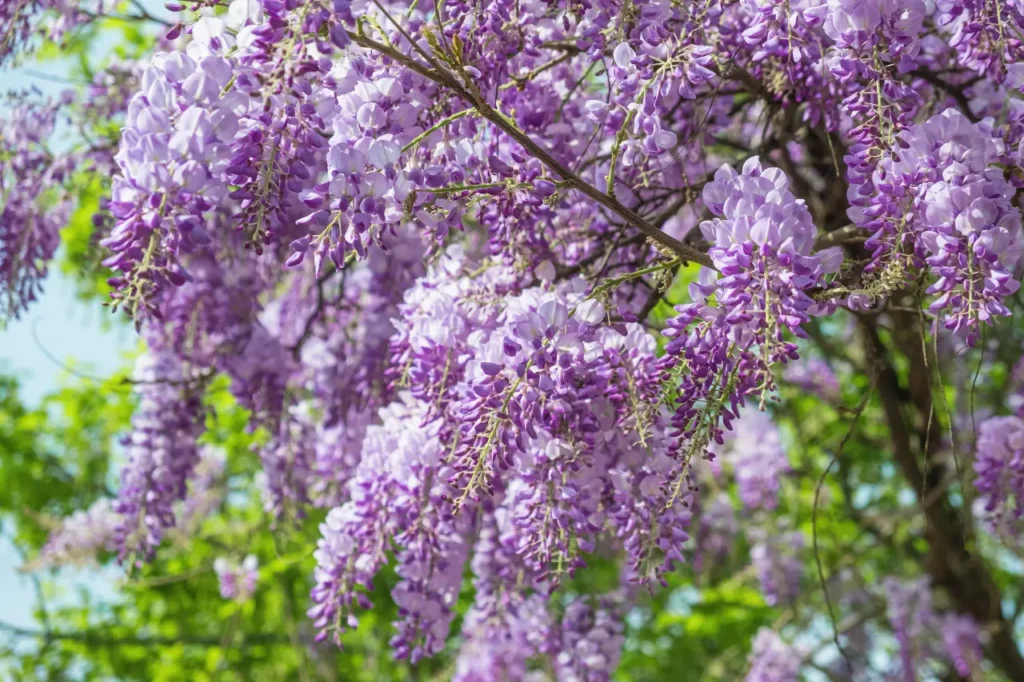
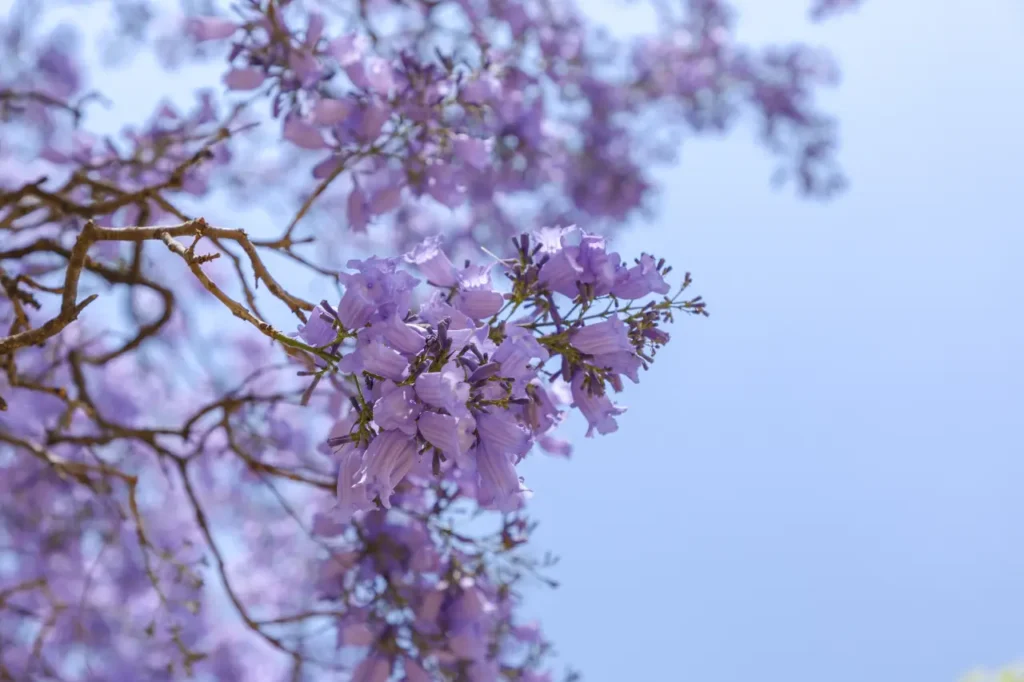

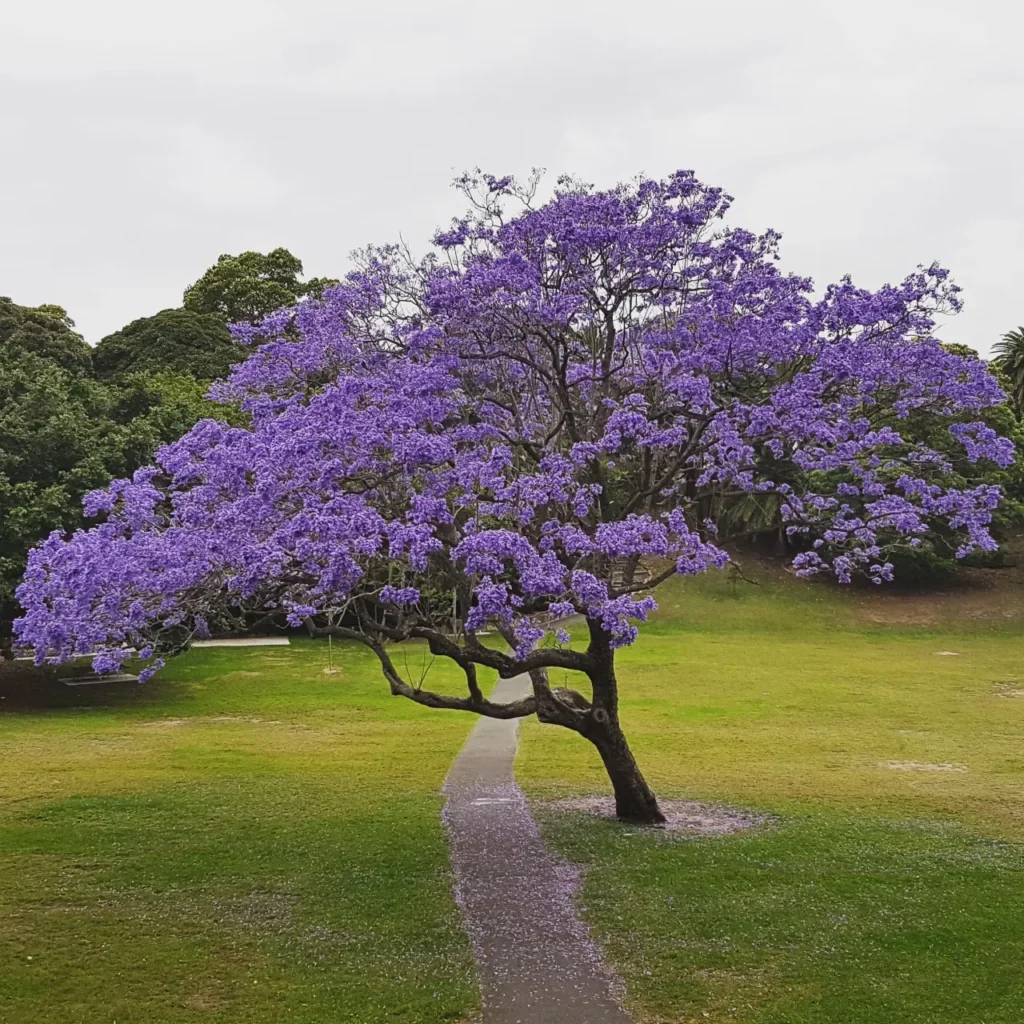
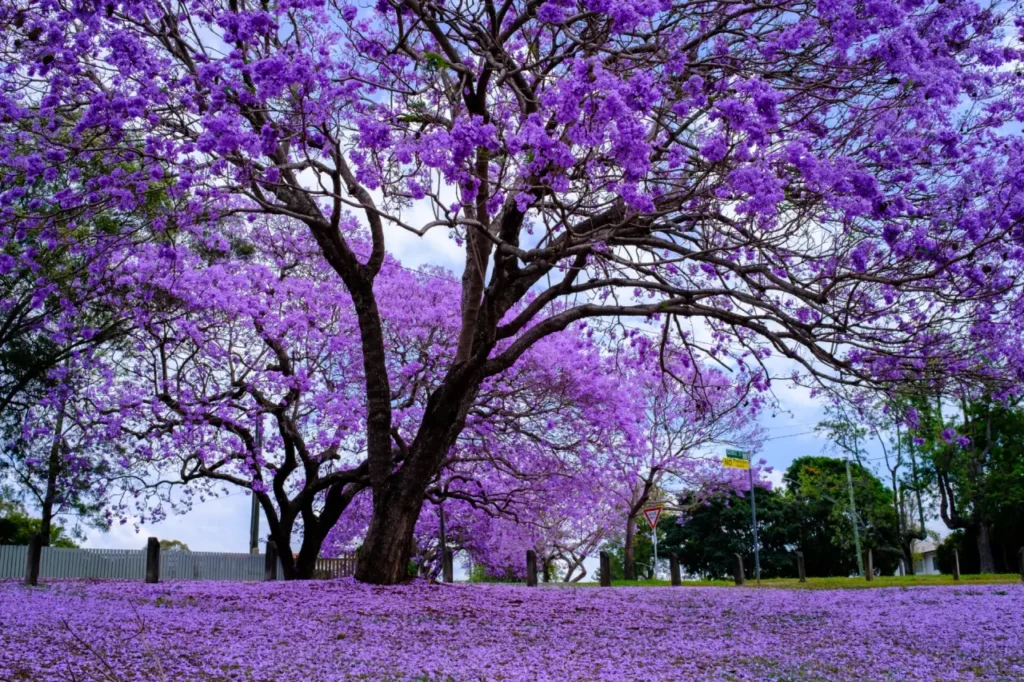

In this article, we will explore the mesmerizing beauty, symbolism, blooming patterns, and cultural significance of Jacaranda flowers, as well as the emotions they evoke in those fortunate enough to witness their splendor.
Delicate Beauty and Blooming Patterns
Jacaranda flowers, characterized by their trumpet-shaped blossoms, are renowned for their striking lavender-blue hues. The clusters of flowers, resembling delicate raindrops cascading from the branches, create a breathtaking visual display. Each individual flower showcases intricate details, with five petals fused together to form a bell-like structure. The blooms gracefully adorn the tree’s lush foliage, presenting a harmonious contrast between the vibrant purple and the deep green of the leaves.
The blooming of Jacaranda flowers occurs in the spring or early summer, depending on the region. As the season progresses, these blossoms transform the landscape into a living masterpiece. Streets, parks, and gardens become adorned with a captivating canopy of lavender, casting a spell of beauty and serenity over those fortunate enough to witness their bloom.
Symbolism and Emotional Significance
Jacaranda flowers are often associated with a range of emotions and symbolic meanings. Their delicate beauty represents grace, elegance, and gentleness. The calming and soothing lavender hue is often linked to tranquility, spirituality, and inner peace. The sight of these blooms can evoke a sense of wonder and awe, transporting observers to a world of natural enchantment.
In various cultures, Jacaranda flowers symbolize renewal, growth, and the arrival of spring. They serve as a reminder of the cyclical nature of life and the transient beauty that can be found in every fleeting moment. The blossoms also carry associations with romance and love, making them a popular choice for wedding decorations and romantic settings.
Cultural Significance and Celebrations
Jacaranda flowers hold cultural significance in many parts of the world, particularly in regions where these trees thrive. Cities like Pretoria in South Africa and Grafton in Australia celebrate the blooming of Jacarandas with vibrant festivals and events, drawing locals and tourists alike. These celebrations often feature music, art displays, and community gatherings beneath the blossoming trees.
In addition to their festive allure, Jacarandas have found their way into literature, music, and visual arts, inspiring artists to capture their ethereal beauty in various forms. Their presence in these creative expressions further highlights their cultural and emotional significance to people around the world.
Jacaranda flowers, with their delicate lavender blossoms and captivating allure, offer a magical spectacle in nature’s grand performance. Their enchanting beauty, symbolism, and blooming patterns create a sense of wonder and serenity. As these blossoms grace our landscapes each spring, they remind us to appreciate the fleeting moments of beauty and find solace in nature’s ever-changing symphony. The Jacaranda flower stands as a testament to the profound connection between humanity and the natural world, evoking emotions that transcend cultural boundaries and serve as a reminder of the delicate yet resilient nature of life itself.







